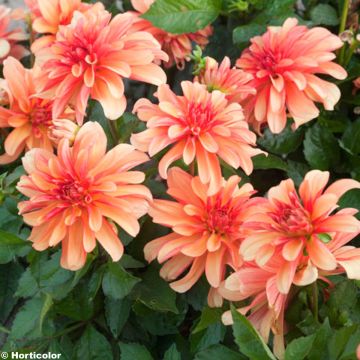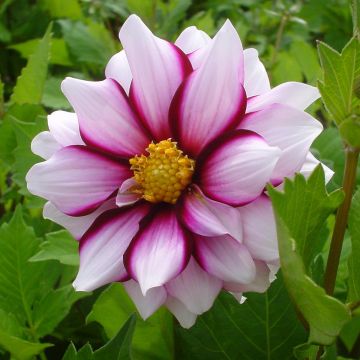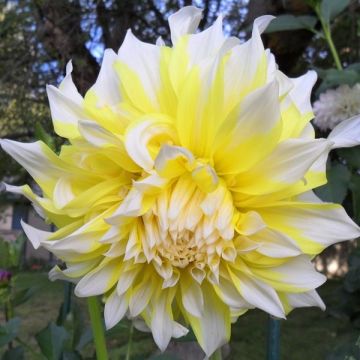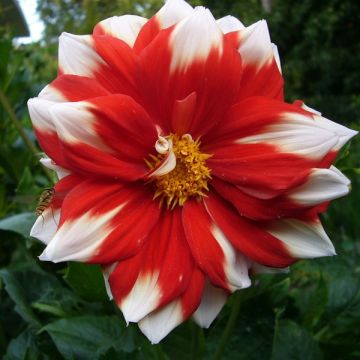

Dahlia Glory of Heemstede


Dahlia Glory of Heemstede


Dahlia Glory of Heemstede


Dahlia Glory of Heemstede
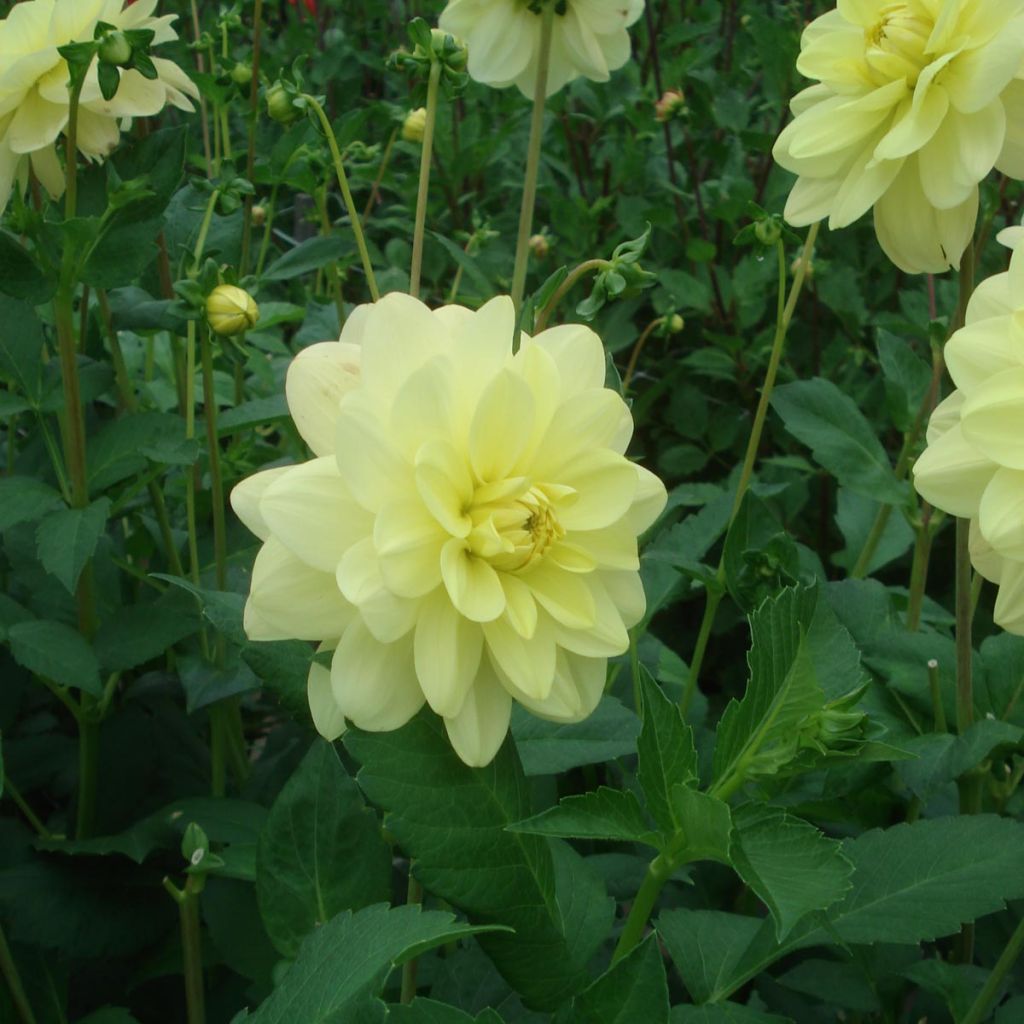

Dahlia Glory of Heemstede
Dahlia Glory of Heemstede
Dahlia Glory of Heemstede
Dahlia
Bulbs arrived in bad condition Completely detached from the main stem
annie, 21/05/2024
This item cannot be shipped to the selected country
Delivery charge from €5.90
More information
Schedule delivery date,
and select date in basket
This plant carries a 6 months recovery warranty
More information
We guarantee the quality of our plants for a full growing cycle, and will replace at our expense any plant that fails to recover under normal climatic and planting conditions.
From €5.90 for pickup delivery and €6.90 for home delivery
Express home delivery from €8.90.
Does this plant fit my garden?
Set up your Plantfit profile →
Description
The Dahlia 'Glory of Heemsteede' is classified as a decorative variety. In a lemon sorbet yellow, the ligules have a beautiful luminous effect that will perfectly accompany your summer flowering beds and brighten the autumn.
Dahlias belong to the large family of Asteraceae, originally from the high Mexican plateaus. Currently, the approximately 20,000 horticultural varieties obtained by humans have invaded, to our greatest pleasure, gardens worldwide. They are classified according to the shape of their heads. The flowers of decorative Dahlias are thicker than twice and often large. The heads of the 'Glory of Heemsteede' variety are 10 to 15 cm (4 to 6in) in diameter, full and well double. The outermost ligules are flat, wide, and slightly revolute (curved upwards). They are lemon sorbet to bright yellow. The central florets are shorter and form a dense bud before anthesis. 'Glory of Heemsteede' is a giant Dahlia, reaching 140 cm (55in) in height and 70 in width. It has a bushy habit, and it will be necessary to thicken its width to solidify and stake it. Indeed, its very branching stems are hollow, which makes it fragile in case of wind. Its leaves are divided into 3 or 5 very denticulate lobes. The stems and leaves are medium green and contribute to the plant's decorative effect.
The flowering of Dahlias is exceptionally long, starting in July and ending in October. To promote floral reblooming and extend this flowering period, remove faded flowers. Even better, regularly cut them to create attractive, colourful bouquets by combining various varieties. Dahlias are easy to grow but require a minimum of work as the tubers need to be stored in winter. Today ,essential in gardens of curates, they were initially cultivated in Mexico as a root vegetable. Their poor taste qualities quickly assigned them the rank of ornamental plant, but they are still welcome to bring some colour to the vegetables in vegetable gardens.
In the background of a bed, the airy foliage of Bronze Fennel and Diamond Grass, for example, will enhance the texture of your giant Dahlia varieties. Add a few Helenium Hoopesii in an old gold colour to perfect an elegant and romantic composition.
Report an error about the product description
Dahlia Glory of Heemstede in pictures
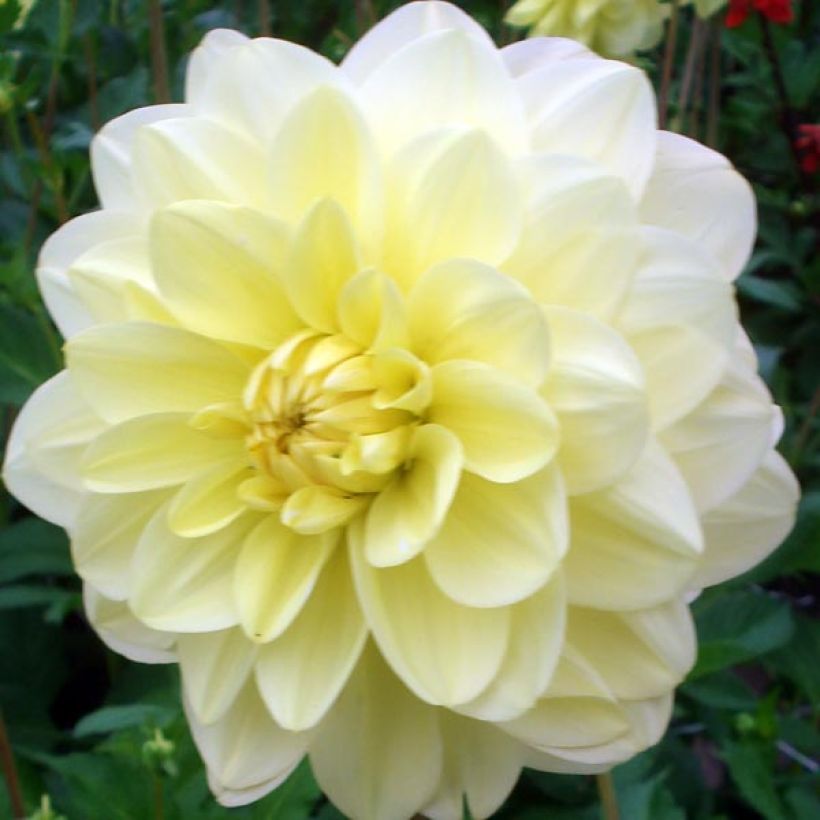



Plant habit
Flowering
Foliage
Botanical data
Dahlia
Glory of Heemstede
Asteraceae
Dahlia
Cultivar or hybrid
Other Ornamental Dahlias
Planting and care
The Dahlia 'Glory of Heemstede' is easy to grow in all regions. For abundant flowering, it is good to follow a few simple rules. Plant the tubers in full sun after the last frost, and rich, cool, and well-draining soils are perfect. However, stagnant moisture would promote tuber rot. Feel free to amend the soil with compost and sand if needed. Work the soil deeply and enrich it, for example, with blood, fish and bone. Place your tuber and crumble the soil well to fill without air pockets. Your dahlia should be covered with about 6 cm (2in) of soil. At the end of planting, water once abundantly and then repeat this regularly for the first six weeks to aid in root development. Dahlias are sensitive to cold weather and need to be overwintered. The first frosts blacken the foliage in November, signalling it's time to dig them up. Carefully remove the tubers, taking off as much soil as possible. Let the foliage dry so the tubers can replenish their reserves. Then cut the stems to 10 cm (4in). Spread your bulbs in a box of newspaper.
Store them in a frost-free, dry, cool, dark place like a frost-free garage or attic. In milder regions, where there are few days of frost per year, it is possible to leave them in place. In this case, cover the ground with a layer of leaves or straw for protection. This tall Dahlia, with its hollow stems, doesn't withstand wind or heavy rain well. To overcome this drawback, you can stake it, but let's agree, it's not very aesthetic. However, by pinching the stems early or removing the axial flower buds, you can spread out the plant's habit, offering more resistance to bad weather. At the same time, you direct the sap flow to a single flower, which will become larger and more robust.
Planting period
Intended location
Care
-
, onOrder confirmed
Reply from on Promesse de fleurs
Dahlias
Haven't found what you were looking for?
Hardiness is the lowest winter temperature a plant can endure without suffering serious damage or even dying. However, hardiness is affected by location (a sheltered area, such as a patio), protection (winter cover) and soil type (hardiness is improved by well-drained soil).

Photo Sharing Terms & Conditions
In order to encourage gardeners to interact and share their experiences, Promesse de fleurs offers various media enabling content to be uploaded onto its Site - in particular via the ‘Photo sharing’ module.
The User agrees to refrain from:
- Posting any content that is illegal, prejudicial, insulting, racist, inciteful to hatred, revisionist, contrary to public decency, that infringes on privacy or on the privacy rights of third parties, in particular the publicity rights of persons and goods, intellectual property rights, or the right to privacy.
- Submitting content on behalf of a third party;
- Impersonate the identity of a third party and/or publish any personal information about a third party;
In general, the User undertakes to refrain from any unethical behaviour.
All Content (in particular text, comments, files, images, photos, videos, creative works, etc.), which may be subject to property or intellectual property rights, image or other private rights, shall remain the property of the User, subject to the limited rights granted by the terms of the licence granted by Promesse de fleurs as stated below. Users are at liberty to publish or not to publish such Content on the Site, notably via the ‘Photo Sharing’ facility, and accept that this Content shall be made public and freely accessible, notably on the Internet.
Users further acknowledge, undertake to have ,and guarantee that they hold all necessary rights and permissions to publish such material on the Site, in particular with regard to the legislation in force pertaining to any privacy, property, intellectual property, image, or contractual rights, or rights of any other nature. By publishing such Content on the Site, Users acknowledge accepting full liability as publishers of the Content within the meaning of the law, and grant Promesse de fleurs, free of charge, an inclusive, worldwide licence for the said Content for the entire duration of its publication, including all reproduction, representation, up/downloading, displaying, performing, transmission, and storage rights.
Users also grant permission for their name to be linked to the Content and accept that this link may not always be made available.
By engaging in posting material, Users consent to their Content becoming automatically accessible on the Internet, in particular on other sites and/or blogs and/or web pages of the Promesse de fleurs site, including in particular social pages and the Promesse de fleurs catalogue.
Users may secure the removal of entrusted content free of charge by issuing a simple request via our contact form.
The flowering period indicated on our website applies to countries and regions located in USDA zone 8 (France, the United Kingdom, Ireland, the Netherlands, etc.)
It will vary according to where you live:
- In zones 9 to 10 (Italy, Spain, Greece, etc.), flowering will occur about 2 to 4 weeks earlier.
- In zones 6 to 7 (Germany, Poland, Slovenia, and lower mountainous regions), flowering will be delayed by 2 to 3 weeks.
- In zone 5 (Central Europe, Scandinavia), blooming will be delayed by 3 to 5 weeks.
In temperate climates, pruning of spring-flowering shrubs (forsythia, spireas, etc.) should be done just after flowering.
Pruning of summer-flowering shrubs (Indian Lilac, Perovskia, etc.) can be done in winter or spring.
In cold regions as well as with frost-sensitive plants, avoid pruning too early when severe frosts may still occur.
The planting period indicated on our website applies to countries and regions located in USDA zone 8 (France, United Kingdom, Ireland, Netherlands).
It will vary according to where you live:
- In Mediterranean zones (Marseille, Madrid, Milan, etc.), autumn and winter are the best planting periods.
- In continental zones (Strasbourg, Munich, Vienna, etc.), delay planting by 2 to 3 weeks in spring and bring it forward by 2 to 4 weeks in autumn.
- In mountainous regions (the Alps, Pyrenees, Carpathians, etc.), it is best to plant in late spring (May-June) or late summer (August-September).
The harvesting period indicated on our website applies to countries and regions in USDA zone 8 (France, England, Ireland, the Netherlands).
In colder areas (Scandinavia, Poland, Austria...) fruit and vegetable harvests are likely to be delayed by 3-4 weeks.
In warmer areas (Italy, Spain, Greece, etc.), harvesting will probably take place earlier, depending on weather conditions.
The sowing periods indicated on our website apply to countries and regions within USDA Zone 8 (France, UK, Ireland, Netherlands).
In colder areas (Scandinavia, Poland, Austria...), delay any outdoor sowing by 3-4 weeks, or sow under glass.
In warmer climes (Italy, Spain, Greece, etc.), bring outdoor sowing forward by a few weeks.


































